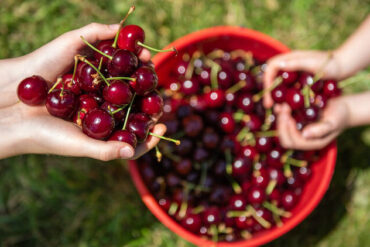Best No-Cook Playdough Recipe for Endless Fun
Are you ready to dive into the colorful world of playdough with your little ones but not too keen on the mess and hassle that comes with cooking it? We’ve got the perfect solution for you! Today, we’re bringing you an easy no-cook playdough recipe that promises hours of fun for your kids without any cooking fuss. Quick, simple, and ready in minutes – get set to roll up your sleeves and make some magic.
The Ultimate No-Cook Playdough Recipe
Every parent knows that playdough is more than just a playtime staple – it’s a developmental powerhouse that enhances motor skills, creativity, and sensory experiences. But store-bought playdough can be pricey, and sometimes you might worry about the contents of the dough. Our homemade no-cook playdough recipe is not only budget-friendly, but it’s also safe for children, made with ingredients you already have in your pantry.
Why Choose No-Cook Playdough?
The benefits of no-cook playdough are plentiful. It eliminates the risk of burns from a hot stove, it’s often smoother and softer than cooked versions, and it’s so quick and easy that even your kids can join in on the making process! Moreover, it’s perfect for an impromptu playdate or a rainy day activity when you are short on time.
Ingredients You’ll Need
- 2 cups of all-purpose flour
- 3/4 cup of salt
- 2 tablespoons of cream of tartar
- 2 tablespoons of vegetable oil
- 1 to 1.5 cups of boiling water (start with 1 cup and add more as needed)
- Food coloring or natural dyes (optional)
- Your choice of scent using essential oils (optional)
- Glitter for a sparkly touch (optional)
Step-by-Step No-Cook Playdough Making Guide
Gather Your Supplies
Begin by collecting all your ingredients and tools. A large mixing bowl, measuring cups, and spoons, a spatula, and a mat for kneading will come in handy. Get ready for some playdough action!
Mixing Dry Ingredients
In your large mixing bowl, combine 2 cups of flour, 3/4 cup of salt, and 2 tablespoons of cream of tartar. Whisk them together to ensure they’re well mixed. These dry ingredients form the base of your playdough.
Adding Wet Ingredients
Now, make a well in the center of your dry mix and add in 2 tablespoons of vegetable oil. If you’re using food coloring and/or scent, add a few drops into your 1 cup of boiling water before mixing it into your dry ingredients. Gradually pour in the boiling water while stirring continuously with a spatula or spoon.
Mix and Knead
As the mixture begins to come together, use your hands to knead the dough on a flat surface. If the dough feels too sticky, slowly add a bit more flour until you reach the perfect playdough consistency – pliable and smooth but not sticky.
Adding Colors and Extras
This is where you can get creative! Divide your dough into balls and create a well in the center of each one. Drip food coloring or natural dyes into the wells, fold the dough over the dye, and knead until the color is evenly distributed. Remember, this part can get a bit messy, so you might want to wear gloves to avoid stained hands.
Store and Play
Once your homemade no-cook playdough is the right consistency and color, you’re ready for play! When playtime is over, store the playdough in an airtight container to keep it fresh for next time.
Customizing Your Playdough
One of the joys of homemade playdough is customization. You can add glitter for sparkle, use natural dyes for color, or even mix in essential oils for a pleasant scent. Think outside the box with extracts like vanilla or almond – as long as it’s safe for your child.
Frequently Asked Questions
Feel free to sprinkle in common questions here with their answers, based on what parents often ask about homemade playdough.
Now that we’ve covered the basics of making your own no-cook playdough, it’s time to unleash the fun. This tactile, imaginative activity is not just a great way to keep your kids engaged but also a delightful bonding experience. Get ready to create, play, and make lasting memories with this easy, fail-proof playdough recipe. Enjoy the squishing, rolling, and sculpting with your little ones – with no cooking required and satisfaction guaranteed!

Ensuring a Great No-Cook Playdough Experience: 5 Key Tips for Parents
Gearing up for an amazing playdough crafting session? Brilliant! To ensure everything rolls out smoothly, here are five essential tidbits every parent should know before prepping the best no-cook playdough recipe:
1. Understanding the Science of Ingredients
Let’s talk science, folks! Salt acts as a preservative, cream of tartar provides elasticity, and oil adds that non-stick magical touch. Knowing these roles helps you tackle any troubleshooting with superhero confidence!
2. Perfecting the Dough Consistency
Not all cups are created equal! A proper measuring cup is your playdough pal. Too sticky? Whisk in flour bit by bit. Too dry? A splash of water wades in to save the day. It’s all about balance for that dreamy dough.
3. Safety First: Allergy Check
Before we dive into dyeing and scenting, it’s checkmate time! Ensure all ingredients get the green light for allergies, especially when introducing new essential oils or natural colorants. Safety makes for happy play!
4. Let Your Little Ones Lead
Stirring up fun also means stirring up skills! Involving kiddos in the process is golden. Measuring, pouring, kneading – it’s not just making playdough; it’s a mini-motor workout and a lesson in following steps.
5. Storing Your Playdough Properly
Last but not least, let’s chat storage. A cool, dry place is the hangout spot for your playdough. Snug in an airtight container, your homemade concoction will stay fresh and ready for the next playdough escapade.
Armed with these five powerhouse tips, you’re well on your way to mastering the no-cook playdough craft. Mix, match, and mold with a sprinkle of love, and watch your little sculptors craft their masterpieces. Happy playdough making!
See more great Things to Do with Kids in New Zealand here. For more information see here
Disclaimer
The articles available via our website provide general information only and we strongly urge readers to exercise caution and conduct their own thorough research and fact-checking. The information presented should not be taken as absolute truth, and, to the maximum extent permitted by law, we will not be held liable for any inaccuracies or errors in the content. It is essential for individuals to independently verify and validate the information before making any decisions or taking any actions based on the articles.




